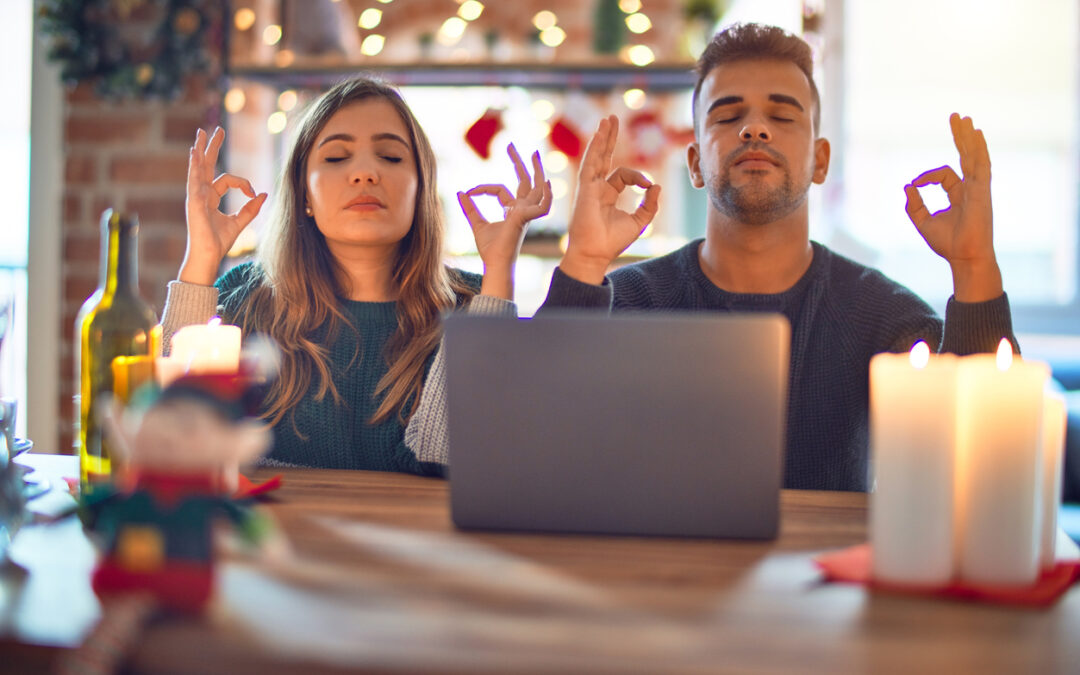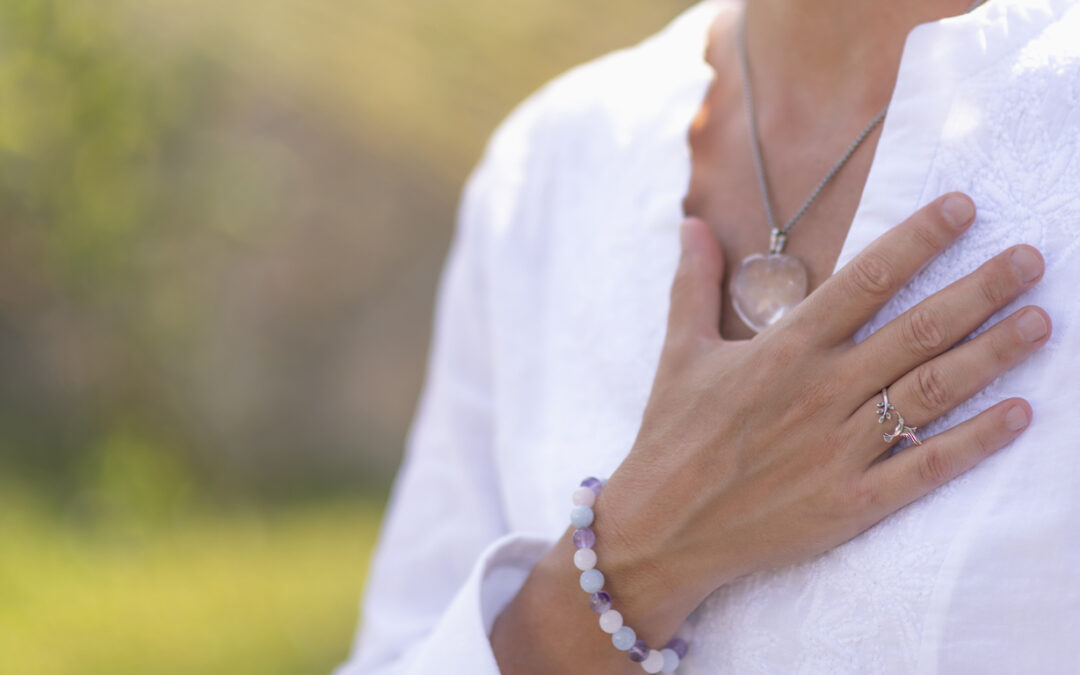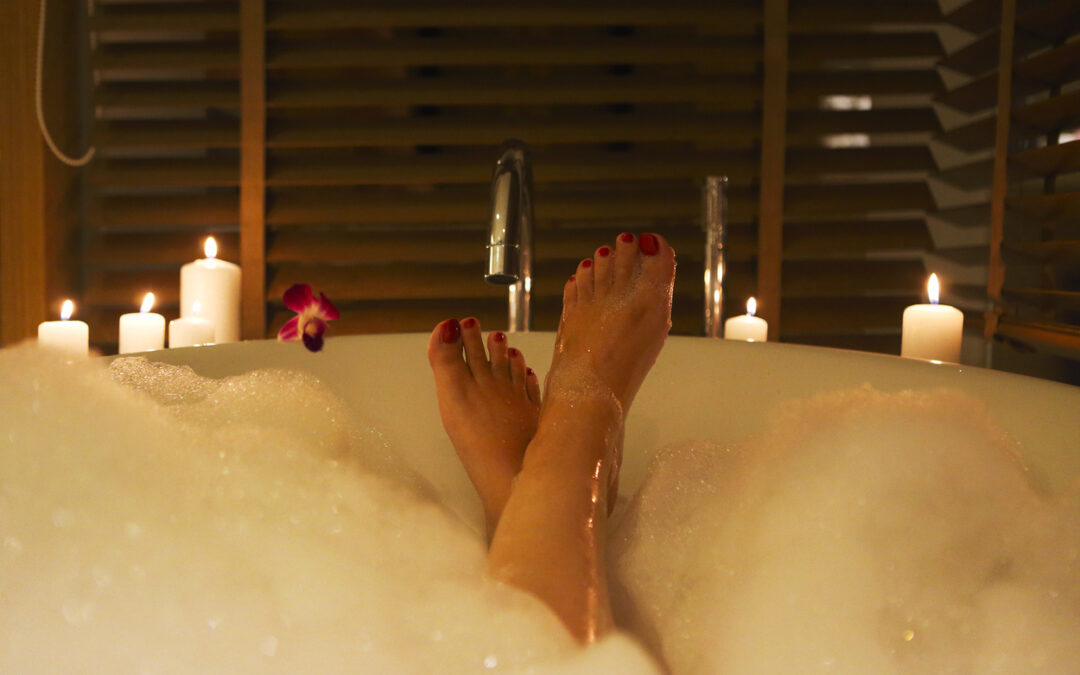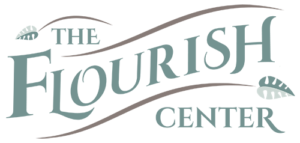
by Jen Owen, N.P. | Apr 5, 2021 | Mind-Body Medicine
Last week on the blog, I talked about giving yourself permission to say no, to rest when needed, and to shine as your best self. You can read that here if you missed it.
This week, I want to go one step further and give you permission to be loved.
I know that seems obvious, we all deserve love. And yes, of course that’s true.
But, do you really allow it?
For many people, when they were children, love got associated with being “good”, getting good grades, doing what you’re told, or being “nice”. Love came in the form of sugar, money, or a quick pat on the back.
Many people I’ve worked with don’t even know what the truest form of love actually is.
If you’re religious or spiritual, you may have felt love from God/Spirit. If you love nature, you may have felt divine love from the trees, mountains, or the ocean.
That’s the form of love I’m talking about.
So, often I see and feel (when I’m working in the pelvic bowl) how many of us have put up a shield of armor around ourselves (and our pelvic bowls) to protect ourselves from being hurt. We’ve had negative experiences with those who are supposed to love us, so we block all forms of love from us.
What has been helpful for me is to realize that love that has any conditions or requirements attached isn’t really the kind of love we all need anyway.
We need that divine love I talked about earlier and we all deserve to receive it no matter if we are “good” or if we achieve our goals.
One way I recommend remembering what that kind of love feels like is to do daily grounding exercises (learn more here).
Another way is through meditation and prayer.
Mostly, it’s about healing your relationship with yourself so that you can feel worthy of receiving pure love all the time.
Holistic Pelvic Care™ is one of the best ways to connect with yourself if you were assigned female at birth. Click here to learn more.
My friend, you are worthy of love. Real love in all of its forms. Let’s help you believe it.

by Jen Owen, N.P. | Jan 15, 2021 | Mind-Body Medicine, Seasonal Health
If you missed Part One of my New Year’s Musings: Why I Like “Intentions” Better than “Goals” or “Resolutions”, check that out here.
There are a lot of opinions about how to best write intentions. There are very feminine ways of dreaming, visioning, and creating that leave a lot of space for what’s possible. Then, there are the very masculine ways of setting goals that are SMART (specific, measurable, achievable, relevant, and time bound).
I like a process that’s somewhere in the middle, a more balanced approach. Most of the people I work with are high achievers anyway, so setting masculine goals doesn’t support the need to also have time to rest and play and be creative.
Below is my 5 Step Process for creating intentions that work.
Step one:
Take some time to think about what you want to see come to fruition in the near future in all areas of your life:
~Home
~Work/career/business
~Health
~Money
~Relationships
~Personal Growth
~Other?
Step Two
Write a few sentences about why each one of the things you want to see come true are important to you.
Why do you want these things to happen?
Step three:
Think about how you’re going to feel when you get each one.
What emotions will achieving this evoke for you?
Get specific….feel it in your body like it’s already true.
Write down these feelings.
Step four
Who are you going to need to be to make these things happen?
What character traits do you already possess that will support your intentions?
Are there any new character traits you’d like to begin embodying to create the life you most want?
Add these to your list.
Step five:
Write your full intentions in a sentence that you can read aloud to yourself.
Read your intentions at least twice daily, once in the morning and once right before bed.
Consider reading them many times per day, making them into the background on your computer or phone, create graphics of them, write them over and over.
Each time you read your intentions, be sure to feel into the feelings you’ll feel once they come true.
example:
I’m going to give you a really practical example from one area of my life, so you can get the idea.
Step One: What do I want…
I want to wake up to a clean kitchen every morning.
Step Two: Why do I want it…
When the kitchen is clean, I’m more motivated to cook more complicated meals that include more fresh vegetables.
Step Three: How will I feel when I get it…
More fresh vegetables mean better digestion for a more healthy gut and more energy. I’ll feel light and energized so I can show up as my best self for myself and my clients.
Step Four: Who do I need to be…
I need to be organized in my time management and dedicated to making this a priority.
Step Five: Putting it all together…
I stay organized and dedicated to cleaning my kitchen every evening, so that I’m motivated to cook more vegetables so I can feel light and energized every day.
Do you see how different this feels than me just telling myself that I have to do the dishes every night? Dishes are my LEAST favorite household chore and I tend to walk away from the dirty kitchen after dinner.
When I do that and I wake up to the chore I like the least, it brings down my mood immediately, so I already don’t feel as energized as I could.
Then, because I don’t have time to do them in the morning, the pile is still there at the next dinner time and I’m more likely to grab a quick, less optimal meal so I don’t create more mess…a vicious cycle.
This is a very practical application of the process. You can use it for anything. Maybe you want more time with your sweetie? Maybe you want to move your body more often? Maybe you want to be more organized at work?
It doesn’t matter. What matters is that you get into the “why” of what you want and the feeling behind it, because what we really care about is how we feel.
Now, when I don’t feel like doing the dishes, I can ask myself, ‘Do you want to have energy tomorrow?’
The answer is almost always a resounding, “Yes!”.
Give this process a try and let me know how it goes.
If your intentions include upleveling your health and wellness, I hope you’ll consider scheduling an appointment with me for support.
Happy New Year!

by Jen Owen, N.P. | Jan 8, 2021 | Mind-Body Medicine, Seasonal Health
Why I Like “Intentions” Better Than “Goals or Resolutions”
It’s that time of year again, the time of resolutions and new goals. You know how it goes. You’re all excited for that big new goal and you get going right away in the new year. And then, in about 3 days, you give up. Some of you might last longer than that, but my guess is that very few new year resolutions actually come all the way true.
The problem is with how they’re created.
Often, we make new year’s resolutions out of some sort of disappointment in ourselves, not feeling like enough, or from a place of lack.
For example, how many people can you name right now who every year set a weight loss goal? They feel bad that they’ve either gained weight or haven’t yet lost previously gained weight, so THIS IS THEIR YEAR!
Can you see already how setting a goal from a place of shame, disappointment, or struggle might not be optimal?
And, I would add that most of the time when people come to see me in my clinic to help them with their new year’s resolution, the goal is often WAY too big to actually be able to attain.
This is why I like the word intention better.
The dictionary definition of intend is to, “have a course of action as one’s purpose or objective; plan”. So, an intention is, “a thing intended, an aim or plan”.
Did you know that in medicine intention means, “the healing process of a wound”?
Intention works so much better because often underneath our new year’s resolution is some sort of healing that needs to take place.
If we look at what we intend to create in our lives and we’re willing to see that some sort of healing might need to take place to get it, doesn’t that seem like a better way to go about it?
After working with thousands of women (and many men, too!), I see how much healing needs to take place when it comes to acceptance of ourselves and particularly of our bodies.
When we set a goal about weight, go on a popular diet, or restrict our eating without intention (and healing), it’s no wonder we can’t reach that goal.
What if…
What if you gained weight because of stress, but you’re not doing anything to reduce stress or support your body in it’s ability to manage stress more efficiently? Do you think boot camp exercises or a highly restrictive diet are going to aid your body in this process? You’re very likely going to make things worse or hurt yourself deeply.
What if you love sugar because you were rewarded with sugar whenever you were a “good girl” or every time you had fun with your family? Of course, you want sugar. Cut yourself some slack. Maybe your intention is to find new ways to reward yourself when you’re celebrating or for having fun, instead of eating sugar. Fulfilling your deep inner need will bring you much more joy than sugar, but sugar works too, so be sweet to you.
What if you’ve gained weight because of an underlying health issue and you’re refusing to go in and get checked out. Maybe it’s not as complicated as you believe it might be? Maybe there are some simple shifts you can make in your life to overcome this? You won’t know unless you find out.
What if you gained weight because it’s the natural course for your body? What if your body is beautiful just like it is? The deeper healing here is acceptance of her for who she is.
It always happens this time of year and this year, I want you to hear:
You are beautiful. If your body is not feeling optimal for whatever reason, come in and see me or see someone else, just get support.
And, as you set your intentions for the new year, I hope you’ll set ones that work FOR you and not AGAINST you and that you’ll be willing to look for the healing underneath.

by Jen Owen, N.P. | Dec 18, 2020 | Mind-Body Medicine, Seasonal Health
The holidays are a notorious time for overextending, overcommitting, and overspending. This year is obviously a little different, yet I’m hearing some common themes in my patients.
I’m here today to tell you that it’s OKAY to NOT do any of that and to take care of you instead!
Here are 3 ways you can practice self-care during the holidays that aren’t your typical self-care recommendations:
1. Say “no”.
You know what happens. You’re on the phone with someone you love and they ask you to do something you don’t really want to do and you say “yes” out of guilt or obligation.
Later, you beat yourself up for committing, your partner is irritated, and the whole thing becomes a really big deal.
Just say “no”! When you feel it’s a “no” in your body, speak your truth.
You’ll save yourself and your family a bunch of grief, and you won’t overextend yourself with things you don’t really want to be doing.
2. Don’t Do Things Unless They Bring you joy.
Holidays are full of traditions. Many of them are really wonderful and bring us a great deal of joy. Others we do for different reasons: maybe we do them because we “always” do them, maybe we do them because other people do them for us, or maybe we do them because we feel we “have to”?
Whatever the reason, maybe it’s okay to NOT do a few things?
For example, we decided not to put up a live Christmas tree this year. Normally, this brings me joy, but this year, it was feeling like a lot of extra work. We would have to go out in the dark some evening after work when it will likely be raining, put the thing up, add the lights, get out all the ornaments, and then do it all in reverse. (I talked about this Live on my weekly Wellness Wednesdays at Noon video on Facebook. You can watch it here.)
I simply don’t want to do it this year, so we aren’t. And, I felt a huge wave of relief when we made that decision.
Maybe for you, it’s something else like sending out holiday cards, or making cookies, or going to someone’s house who isn’t being safe with COVID, or ???
Whatever it is, I give you full permission to simply decide not to do it.
3. Don’t overspend.
It’s tempting during the holidays to try to make it “perfect”. This can include spending beyond your means. Try not to spend so much that you have to repay yourself well into the new year.
If funds are tight, start new traditions, buy gently used items, ask friends if they have any hand-me-downs that would be appropriate for your family. Little kids, especially don’t care if something is brand new.
And, buying or receiving used items is better for the planet.
Make a budget and stick to it and think of it as self-care rather than feeling deprived or disappointed.
Of course, you can do other self-care things like taking a salts bath, doing some deep breathing, or even a short break with a nice cup of tea.
I’ve learned over the years that those things are nice and it’s the deeper level of self-care like the suggestions above that make a longer lasting difference.
Happy Holidays to you and yours!
Do you have other tips like these? Please post them in the comments below.

by Jen Owen, N.P. | Nov 22, 2020 | Mind-Body Medicine, Seasonal Health
It’s that time of year again when we get to take a pause and remember everything we’re grateful for. There are so many great gratitude practices out there. The one that works best for me has three parts. I actually try to do this practice several times a week and not just around the Thanksgiving holiday.
You can say your gratitudes out loud or write them down.
The main key to getting the most out of any gratitude practice is the feeling behind it. Anyone can say the words. To get the most benefit, you want to take the time to breathe and feel all the feelings about the things you say or write.
Research on gratitude shows that a regular gratitude practice can literally make you happier, improve your health in general, and improve brain function.
Here’s my 3-part practice:
Part 1: Challenges gratitude
The first part of gratitude is for the challenges in your life. Yep. That’s right. Think of anything that’s felt hard or brought you strife and be thankful for it.
What did you learn? Did it change something else in your life for the better? What benefits did the challenge bring?
For example, the pause that happened with the first stay-at-home order allowed me the space to realize that I wanted to do primary care integrative medicine again. I started the insurance credentialing process while I had a break from my regular schedule. I’m so grateful I had that time.
Part 2: Current gratitude
This part is the most commonly know form of gratitude.
What are you thankful for in your life right now?
Think of everything you can, including physical items, your home, the people in your life, money, etc.
If you’re having a hard time right now, your gratitude might be as simple as the shoes on your feet or the roof over your head. It’s okay if it’s simple. Remember, it’s the feeling that counts.
This one is the most fun!
Be grateful for everything in your life you’re wanting to come to you, as if it’s already here.
For example, if you want a new position at your job, you say, “Thank you for this new position”, and then allow yourself to feel everything you’ll feel on the day you get it.
And that’s it!
I challenge you to try this practice every day for two weeks and see what happens.
And then, of course, let me know.
Integrative Medicine includes mind-body practices like these. When we connect the dots between body, mind, and spirit, true and sustained healing is possible. If you’re in Oregon, come on in and see me in my clinic.
Happy Thanksgiving! I’m so grateful to you for reading this post.
Have a favorite gratitude practice? Please post it below!

by Jen Owen, N.P. | Nov 12, 2020 | Mind-Body Medicine
I love the benefits from my regular Epsom salts baths, and I felt I should share. Epsom salts are actually not salts, but are a combination of magnesium and sulfate. They get their name from a saline spring in Epsom in Surrey, England.
Magnesium works on at least 300 different enzymatic processes in the body. It is easily absorbed through the skin. It is known to decrease stress by increasing serotonin levels and decreasing adrenaline levels. Serotonin relaxes and calms, while adrenaline is involved in fight-or-flight.
Stress depletes magnesium levels, so it is thought that over 1/2 of Americans are deficient. Magnesium can be helpful for muscle aches, PMS, migraine headaches, injuries, decreasing inflammation, skin exfoliation, and more. Sulfate helps to increase the absorption of magnesium, reduce pain, especially headache pain, and flush toxins from the system.
Epsom salts baths can help to relax your muscles, draw toxins from your body, decrease swelling, and help you have very soft skin. They may even give your hair more body and shine.
I also find that Epsom salts baths are spiritually cleansing. They help to clear your aura and raise your spiritual vibration. After a bath with Epsom salts, I feel revived, energetic, and much more mentally clear.
Best of all, using Epsom salts is inexpensive and accessible. You can find them in any pharmacy or grocery and they run between $4-10, depending on the amount you purchase. Simply add 2 heaping cups to your warm bath and experience them for yourself. For best results, submerge yourself as completely as possible several times during your bath.
If you enjoyed this article, be sure to join my Sacred Sundays newsletter list for mind-body wellness tips and journaling prompts in your inbox every Sunday morning.







Recent Comments